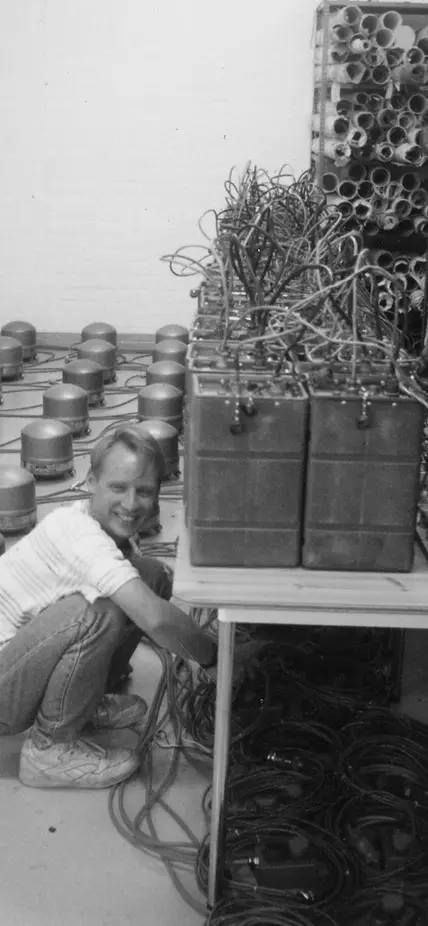Adriana Kuehnel is a Carnegie Earth and Planets Laboratory (EPL) renaissance woman.
Since 1994, she has been involved with Carnegie in some shape or form. She’s been a field seismology collaborator, a volunteer archivist, an IT specialist, and a scientific programmer for the astronomy team. She is also deeply involved with the campus community. She currently spearheads the campus community’s environmental efforts, and she recently coordinated the volunteer mask-making group during the COVID-19 pandemic response.
Soon she will take on yet another role as she transitions out of IT support and into a research assistant position with the Geophysical Group. We sat down with Kuehnel to discuss her love of astronomy and planetary science and how that has shaped her career so far.
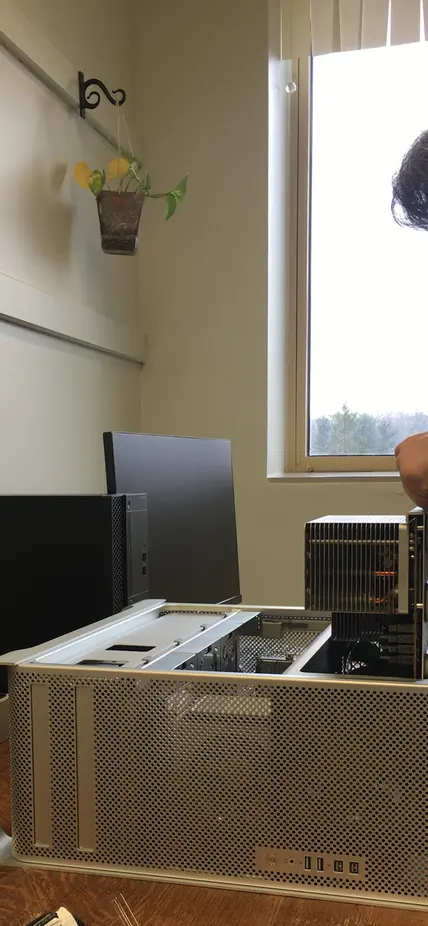
Kuehnel performs maintenance on one of the scientific servers involved in the Earthbound Planet Search Program. Credit: Adriana Kuehnel
What do you do at the Earth and Planets Laboratory?
At EPL, I provide programming support, software/hardware technical support, and perform data processing for the astronomy group to assist in the group’s scientific endeavors
As part of the Earthbound Planet Search Program (EBPS), I work closely with Paul Butler on data from the Automated Planet Finder and Planet Finder Spectrograph. I also manage the systems where the data coming from these two instruments is processed. The EBPS program uses the radial velocity and photometry methods to find planets orbiting nearby stars and studies the stars around which those planets are orbiting.
I also work alongside Michael Acierno and other IT staff to provide general information technology support for systems administration, Active Directory, clusters management, networking, and general user issues.
How did your background prepare you for this role?
I have a Bachelor’s degree in Geophysics and graduate studies in Environmental Hydrogeology. I have 20+ years of experience in programming and application development and have participated in more programming training than I can count.
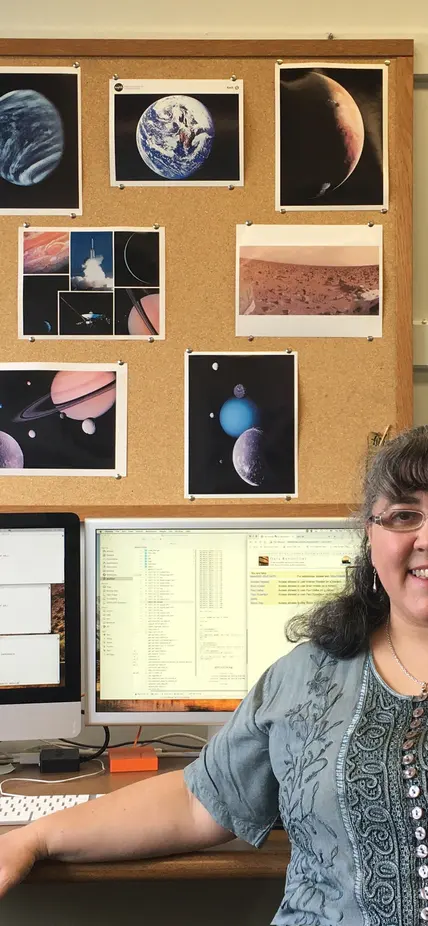
Adriana Kuehnel’s love of astronomy started early in her life. Here, Kuehnel poses her collection of NASA posters, which she collected as a child. The posters hang in her office, where she works on the data from the Earthbound Planet Search. Credit: Adriana Kuehnel
When did your love of planetary science begin?
My love for planetary science started during my High School years (in Brazil). As a teenager, I volunteered at the Planetarium of São Paulo in the educational sessions given to students of all ages.
I used to write letters to JPL/NASA to request pictures from spacecraft like Voyager 1 & 2. I waited for months to receive a reply in the mail containing amazing images from our solar system.
Your first love was astronomy, so how did you end up in geophysics and IT?
When it was time to apply for college, there were no astronomy undergraduate programs near me, so under the guidance of Dr. João Steiner I entered the geophysics program at the University of São Paulo (USP). He said I would need this kind of knowledge to study the planets in the future—and he was right!
After graduating college, I did work in the geophysics field for a few years—I studied environmental hydrogeology—but eventually, I went into computer programming. I have been in the IT world for 22 years now, spending more than 16 of those years at The National Academies of Science, Engineering, and Medicine, as a lead applications developer.
Although I didn’t continue to pursue planets and went into computer programming instead, my collection of classic solar system pictures from JPL/NASA now hang in my office where I carry out essential tasks for the Earthbound Planet Search Program at EPL. It’s all come full circle!
How did you get involved with Carnegie Science?
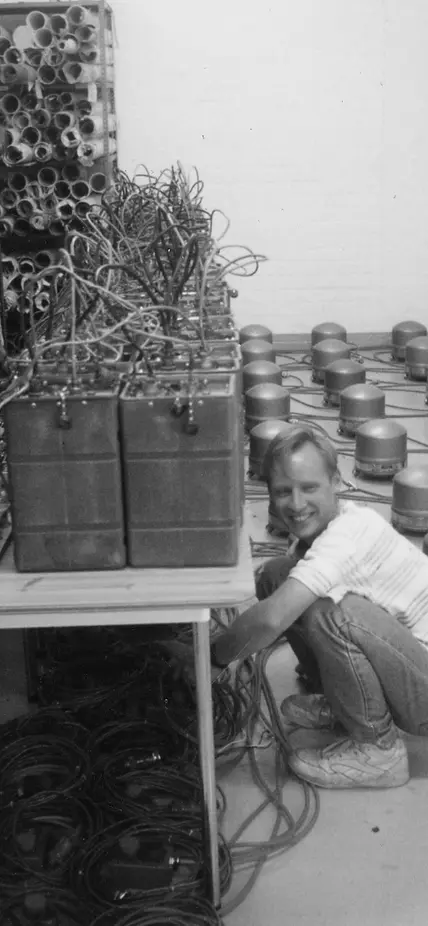
Adriana Kuehnel (right) works with Randy Kuehnel (middle) and Rod Green (left) to prepare seismometers to study the Kaapvaal Craton in South Africa circa 1997. Credit: Earth and Planets Laboratory
My relationship with Carnegie started a long time ago.
I first met Carnegie scientists Paul Silver and David James in Brazil in 1993/1994. I was an undergraduate student working on my honor thesis and then a technician at the seismology group of the Institute of Astronomy and Geophysics, USP. Paul and David were collaborating with my advisor Jesus Berrocal and professor Marcelo Assumpção.
I became close friends with Carnegie field seismologist Randy Kuehnel, who had been doing fieldwork for those collaboration projects, and in 1995 I married Randy and moved to the U.S.
From fall 1995 to spring 1998, I did fieldwork for the seismology group at the Department of Terrestrial Magnetism—one of the departments that recently merged to become EPL—and volunteered at the Library helping Shaun Hardy.
In these years, I forged long-lasting friendships. So, when I started my scientific programmer position at EPL in the Fall of 2017, it was like coming back home.
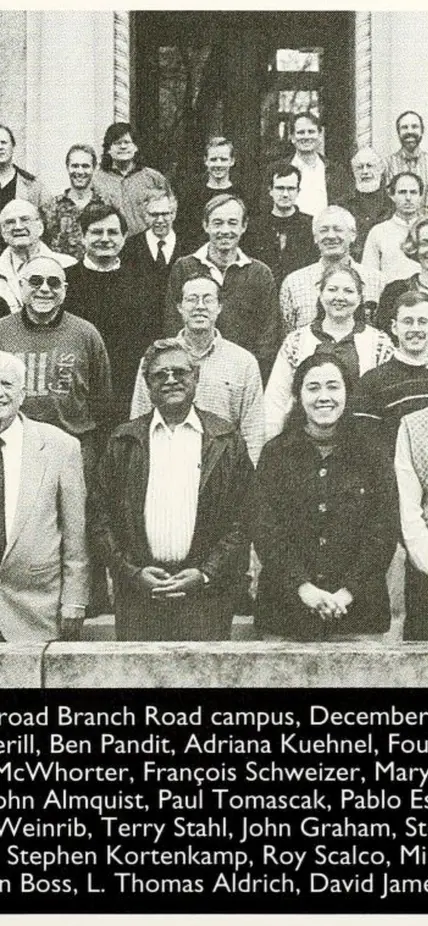
Kuehnel is fourth from the right on the front row in this Department of Terrestrial Magnetism group photo from 1997. Many notable astronomers and geophysicists stand with her in this image, including famed astronomer Vera Rubin (front row, third from the left).
What other interests motivate your work?
I believe humans must assume responsibility for causing global warming and harming the environment. That applies to countries, corporations as well as individuals. That is why I requested the EPL directors to start a Green Initiative at the Broad Branch Road campus. Being aware of the consequences of our choices is the first step. Then we must change behaviors to be part of the solution instead of the problem.
The Green Initiative group was just forming when the pandemic lockdown started. As soon as we understand when and how we will return to campus, we will rekindle the initiative and work together to implement changes in our activities and choices.
What’s next for you at EPL?
Over the next year, I will transition from IT support into research assistance. In addition to the work I already do for the Astronomy group, I will be helping out with instrumentation and lab management for the Geophysics group.
I am really looking forward to working with even more amazing scientists at Carnegie Science!
